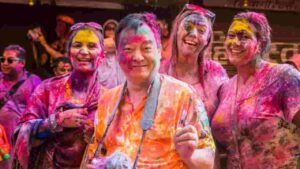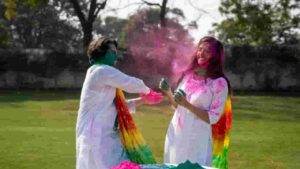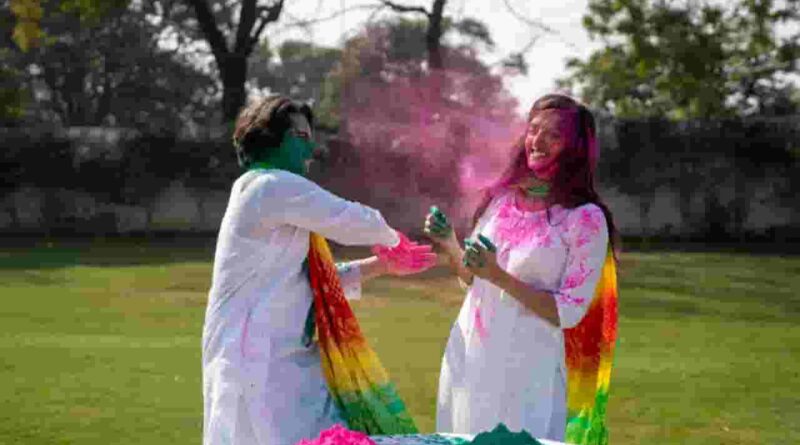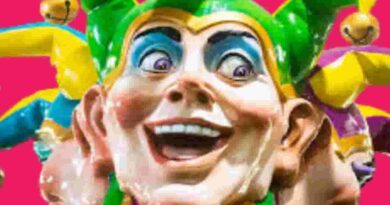Happy Holi Exclusively attractive festival of colors
Happy Holi: Exclusively attractive festival of colors
Holi Festival of Colors
Happy Holi:
Happy Holi: The Festival of Colors
Happy Holi: Holi, also known as the “festival of colors,” is one of the most significant Hindu festivals celebrated across India and in other parts of the world. It is a two-day festival, with the first day known as Holika Dahan, and the second day called Rangwali Holi or Dhulandi. Holi is typically celebrated in late February or early March, marking the beginning of spring and the end of winter.
Happy Holi:History and Significance of Holi
The origin of Holi dates back to ancient Hindu mythology, where it is believed to have started as a celebration of the victory of good over evil. The legend goes that there was a demon king, Hiranyakashipu, who was granted a boon by the gods that made him nearly invincible.
He became arrogant and started considering himself a god, forbidding his son Prahlad from worshipping Lord Vishnu, whom Hiranyakashipu considered his arch-enemy. However, Prahlad continued to worship Vishnu, which angered Hiranyakashipu.
He asked his sister, Holika, who had the power to not be harmed by fire, to sit in a pyre with Prahlad in her lap. Holika agreed, but due to her own evil intentions, she was consumed by the fire, while Prahlad was protected by Vishnu. This event is celebrated as Holika Dahan.
Happy Holi: The second day of Holi, Rangwali Holi or Dhulandi, is celebrated by smearing colored powders and throwing colored water at each other. This custom is believed to have originated from the legend of Lord Krishna, who was famous for his pranks and loved playing Holi with his friends and Radha.

Happy Holi: Celebrations of Holi
Happy Holi: Holi is celebrated with much enthusiasm and joy across India and in other parts of the world. People start preparing for the festival weeks in advance, making special sweets and snacks, buying new clothes, and stocking up on colors and water guns. On the first day of Holika Dahan, people light a bonfire in the evening, symbolizing the victory of good over evil. They also sing and dance around the fire, praying for prosperity and good health.
The second day of Holi, Rangwali Holi or Dhulandi, is the day when people play with colors and water. People smear each other’s faces with colored powder and spray colored water using water guns and balloons. It is a day of fun and frolic, with people exchanging greetings and sweets. Holi is also a time to forget past grievances and strengthen relationships with loved ones.
Precautions to Take During Holi
While Holi is a fun-filled festival, it is important to take precautions to ensure that it does not cause harm. It is advisable to use natural and organic colors instead of synthetic ones, which can cause skin and eye irritations. People should also avoid using water balloons, as they can cause injuries. It is essential to stay hydrated and protect one’s skin from the sun.
Happy Holi: Other Customs and Traditions of Holi
Apart from playing with colors and water, Holi is also celebrated in different parts of India with unique customs and traditions. In some parts of North India, people participate in a ritual called Lathmar Holi, where women playfully beat men with sticks. In parts of Maharashtra, people create human pyramids to reach and break a pot of buttermilk hung high up in the air, known as Dahi Handi. In South India, people celebrate Holi by worshipping Lord Kamadeva, the god of love and desire.

Happy Holi: Food and Drinks of Holi
Happy Holi is also a time for indulging in delicious food and drinks. People prepare and share sweets like gujiya, mathri, and laddoos, along with savory snacks like namakpare and papdi. Bhang, a drink made from cannabis leaves, is also a popular drink during Holi in some parts of India.
Happy Holi: Holi and Environment
Happy Holi:While Holi is a festival that brings people together, it is also essential to keep in mind its impact on the environment. The synthetic colors used during Holi can be harmful to the environment, especially water bodies. It is crucial to use natural and eco-friendly colors and avoid wastage of water during the festival.
Holi Celebrations Outside of India
Holi is not just celebrated in India but also in other parts of the world where there is a significant Hindu population. In countries like Nepal, Bangladesh, and Pakistan, Holi is a public holiday. In the United States, the United Kingdom, and Canada, Holi celebrations are organized by local Indian communities, where people gather to play with colors and enjoy traditional food and music.
Holi and Social Harmony
Holi is a festival that promotes social harmony and equality, as people of all castes, religions, and genders come together to celebrate. It is a time to forget differences and embrace unity and brotherhood. Many organizations and communities also use the occasion of Holi to spread awareness about social issues and promote campaigns for a better society.
Holi and Tourism
Holi is a significant tourist attraction in India, with people from all over the world coming to experience the vibrant and colorful celebrations. Many travel companies organize Holi-themed tours to popular destinations like Vrindavan, Mathura, and Jaipur, where people can witness the grandeur and beauty of the festival.
Holi and Bollywood
Holi has been an integral part of Bollywood movies, with numerous iconic Holi scenes in classic and contemporary films. The festival is often depicted as a joyous celebration of love and friendship in movies, where characters play with colors, dance to upbeat music, and enjoy festive food and drinks. Some of the popular Bollywood Holi songs include “Rang Barse” from the movie Silsila, “Balam Pichkari” from the movie Yeh Jawaani Hai Deewani, and “Holi Ke Din” from the movie Sholay.
Holi and Business
Holi is not just a festival of colors and joy, but it also has significant economic importance. The festival is a peak season for many businesses in India, including textile, food, and tourism industries. Many small-scale industries and local artisans also benefit from the increased demand for traditional clothes, sweets, and handicrafts during Holi.
Holi and Technology
With the increasing use of technology and social media, Holi celebrations have also become more innovative and creative. People use various apps and filters to create colorful Holi-themed photos and videos, and social media platforms like Instagram and Facebook are flooded with Holi posts and greetings. Many virtual Holi parties and events were also organized during the pandemic, where people could participate in the festivities from the safety of their homes.
Holi and Music
Music is an integral part of Holi celebrations, with various folk songs and devotional music played during the festival. In North India, people sing and dance to the beats of the dhol, a traditional drum, while in other parts of the country, people play instruments like the harmonium and tabla. Holi is also a time when musicians and artists perform in public places, adding to the festive spirit.
Happy Holi:Holi and Spirituality
Holi is not just a festival of colors and joy, but it also has spiritual significance. It marks the victory of good over evil, as well as the arrival of spring and new beginnings. Many people also associate Holi with the legend of Radha and Krishna, where Krishna played Holi with Radha and her friends. The festival is also a time to seek blessings from the divine and offer gratitude for the blessings of life.
Happy Holi: Holi and Philanthropy
Holi is also a time to give back to society and help those in need. Many organizations and communities organize philanthropic activities during Holi, such as distributing food and clothes to the poor, providing healthcare services, and organizing cultural programs for underprivileged children. Holi is a reminder of the importance of compassion and empathy towards others.




